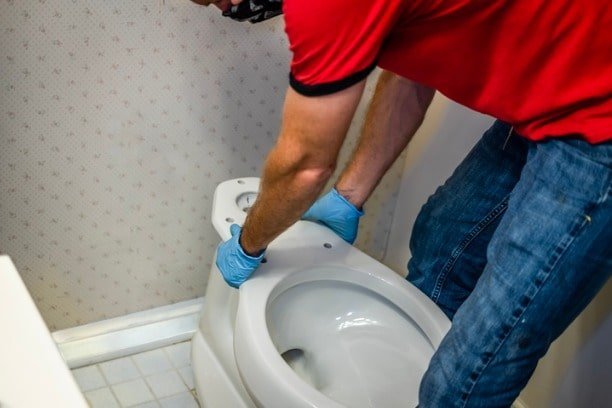Air Conditioning Maintenance: The Ultimate Guide
Diligent HVAC maintenance service can extend a unit’s lifespan by many years. It can even save homeowners time and money by keeping a cooling system efficient and cost effective. While certain repairs and tasks are best left to professionals, there’s plenty homeowners can do to ensure they are getting the most out of their cooling system. Read on for the ultimate guide to air conditioning maintenance.Looking for professional HVAC installation in Highland Village, Texas? Give the team at Strittmatter Air Conditioning, Heating and Plumbing a call at 940-246-2075 or visit us online for more information.
Type of Hvac Unit
Before we begin, it’s important to note that not all HVAC units are made equal. Some systems are straightforward and their components are easy to identify and access. Other units may need specific tools or knowledge to get the job done. If you are uncertain about a DIY repair or performing maintenance at home, contact an HVAC professional first.
Indoor A/C Unit Maintenance
HVAC units typically have an indoor portion, housed in an air handler cabinet, and an outdoor condenser unit. Both components warrant regular maintenance. The first step before attempting to clean your unit is to ensure the system is completely turned off, either by locating a power switch on the unit itself or by shutting the breaker off. Once the unit is safely disconnected, you can begin cleaning and inspecting your air conditioner. Let’s explore common indoor A/C maintenance tasks.
Change Air Filters
HVAC air filters should be replaced or cleaned—if reusable—every 30–90 days. The frequency of air filter maintenance depends on your lifestyle, climate and number of pets in the home. Most home improvement stores sell HVAC filters, and size specifications can typically be found printed on your old filter’s frame. Large homes may have HVAC systems that utilize multiple air return registers (vents that suck air in, rather than blowing cool air out). In these cases, each return register will likely have its own air filter that needs to be checked and replaced.
Clean Evaporator Coils
Your air conditioner’s evaporator coils are responsible for removing heat and humidity from indoor air. As these coils are often wet from condensation, they are prone to collecting dirt and dust. Filthy evaporator coils won’t be able to cool your home efficiently. In order to access evaporator coils in your indoor air handler, you may need to unscrew and remove an access panel. Evaporator coils can be cleaned with compressed air, commercial cleaning solutions or mild detergent and water. When using compressed air, be sure to aim the nozzle in the opposite direction of normal airflow.
Check and Clean the Condensate Drain Line
As moisture drips down from the evaporator coils in your unit, it’s carried outside by a condensate drain line. This drain can become clogged with dirt and other debris. A severe clog may cause water to flow back into your unit, eventually overwhelming the system’s overflow drain pan and leaking into your home. To avoid moisture damage, it’s wise to inspect and clean out your unit’s condensate drain line on a regular basis. Clogs can be removed with a wet/dry vac or broken down with a homemade solution of baking soda and white vinegar. Using a funnel, try pouring 1–2 cups baking soda into the drain line’s access point, followed by 1–2 cups of vinegar. Cover the drain and wait a few minutes while the solution does its thing. Repeat this process if needed, flushing the line with warm water to fully clear it.
Inspect and Clean Air Vents and Air Ducts
Dust, dirt, pet hair and pollen can all get into your ductwork and get deposited around air vents. It’s wise to keep air vents clean and clear of build up by wiping them down frequently. It’s also important to inspect ductwork, as air pollutants can build up over time, inviting bigger problems like mold growth or insect and rodent nests. Air ducts should be professionally inspected and cleaned on an annual basis.
Outdoor A/C Unit Maintenance
Your HVAC system’s outdoor condenser unit is built to withstand the elements, but that doesn’t mean you can skip regular maintenance. Keeping this portion of your air conditioner clean will keep the whole system efficient and increase its lifespan. As always, ensure the unit is off, either by turning off the power switch on the unit itself or by shutting it down at the main electrical panel. Once you’re ready, consider the following maintenance tasks:
Clear Debris From A/C Fins
Your condenser unit has metal fins all around it. Debris like leaves, twigs, seeds and nuts can all get caught in these fins, bending them out of shape and impeding airflow. Be sure to carefully remove debris and bend fins back into place gently using a butterknife.
Clear away Plant Growth
Trim back any bushes, trees or shrubbery to ensure there is at least a 2-ft clearance around your unit. This is crucial for proper airflow—a blocked unit won’t be able to release air removed from inside of your home to the outdoors.
Clean off Dirt and Grime
If your condenser unit is filthy or you are unable to clear away debris, remove the top cover and hose down the metal fins from the inside out, careful not to get water on the motor.
Wipe Down the Condenser Fan
Using a damp cloth, gently wipe down the condenser fan and remove any remaining debris. Once cleaning is complete, replace access panels and allow the system to dry fully before attempting to run a cycle.
Hvac Maintenance Service From Strittmatter
An annual A/C system tune-up from an HVAC pro includes a top-to-bottom cleaning and inspection of your unit. When you work with Strittmatter Air Conditioning, Heating and Plumbing, you can rely on quality service, transparent pricing and a 100% money back guarantee if you aren’t satisfied with our work.Strittmatter specializes in cooling, heating and plumbing services in Highland Village, TX, and the surrounding areas. Call 940-246-2075 today or visit us online to schedule services.





